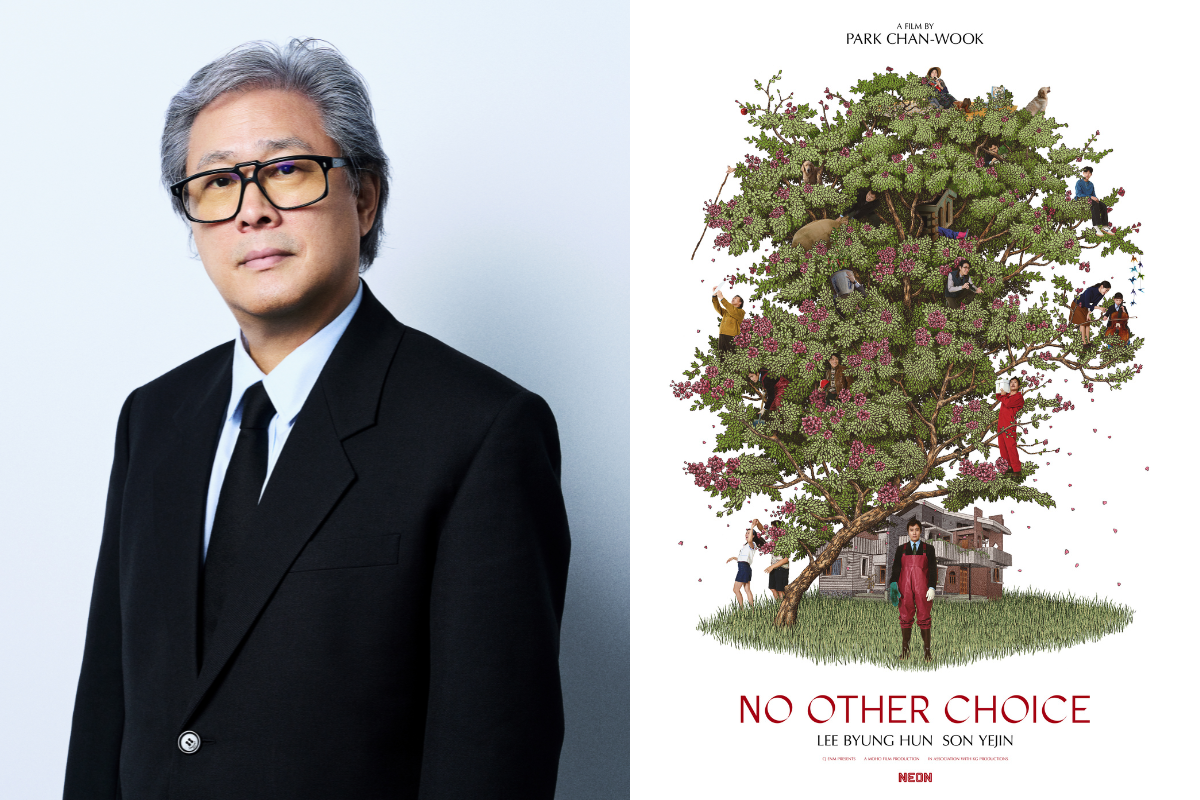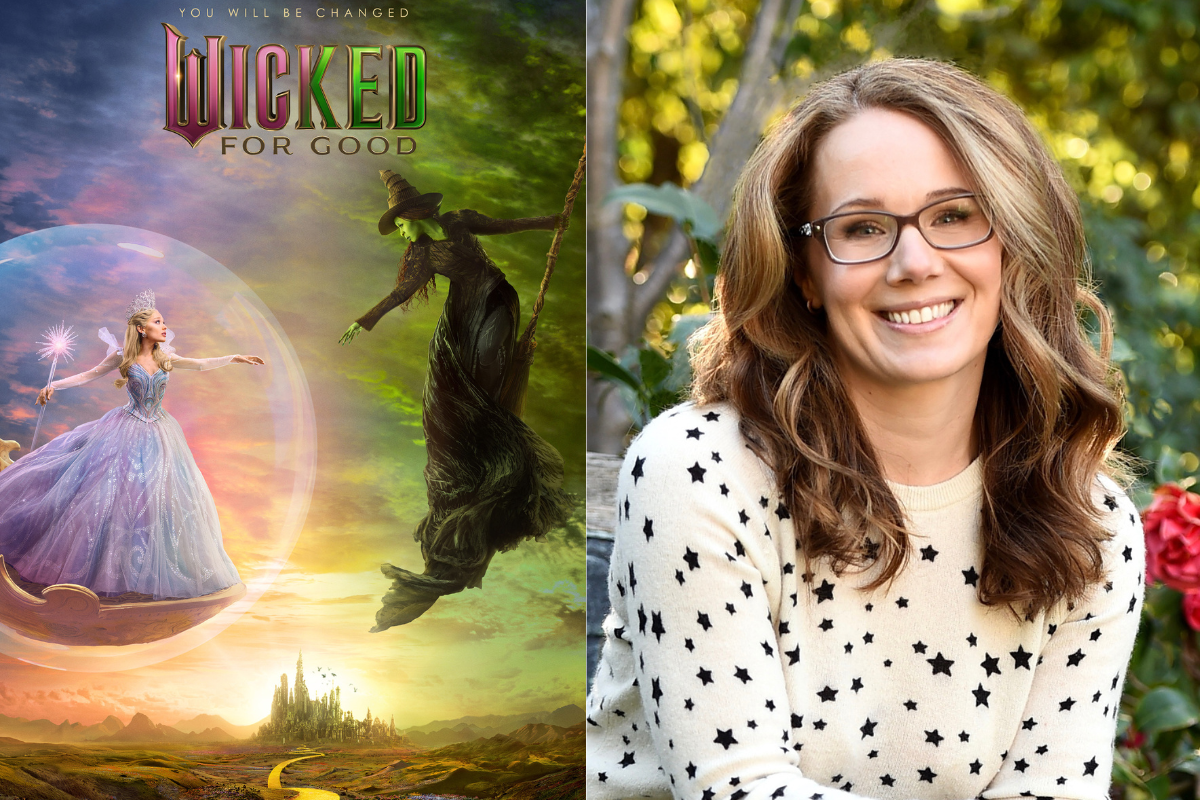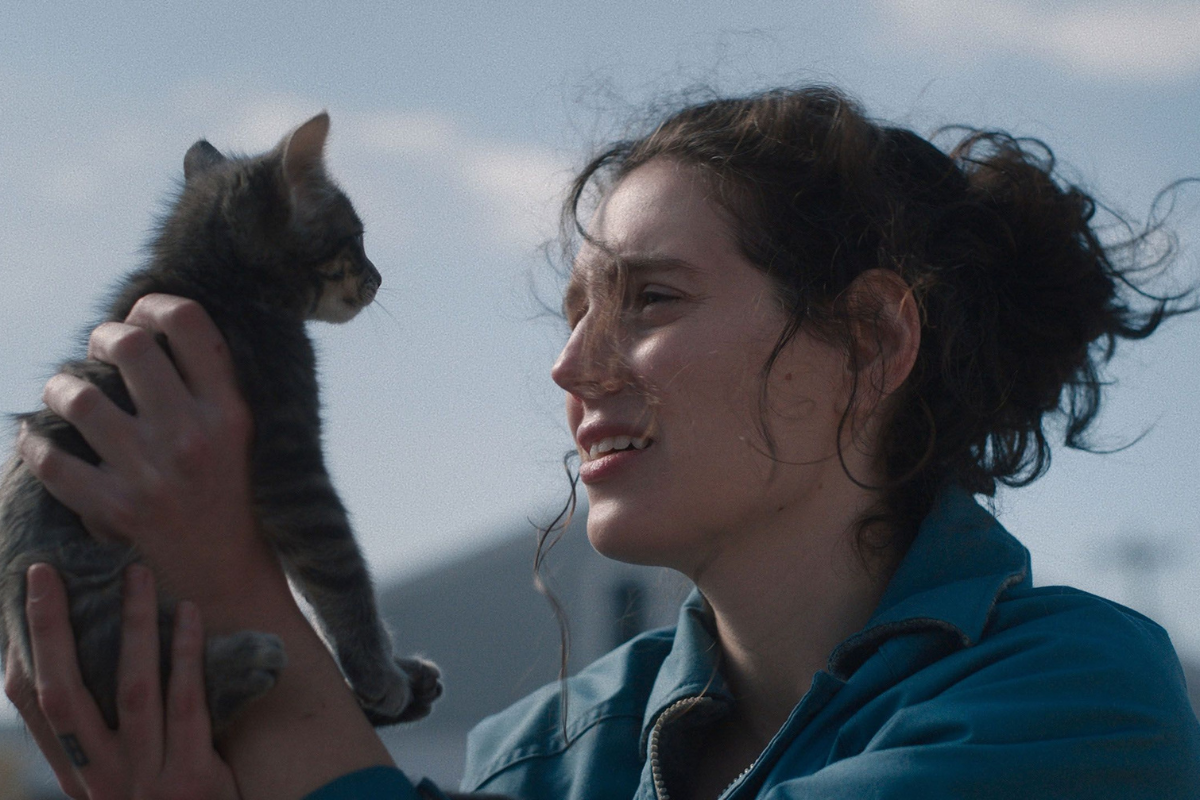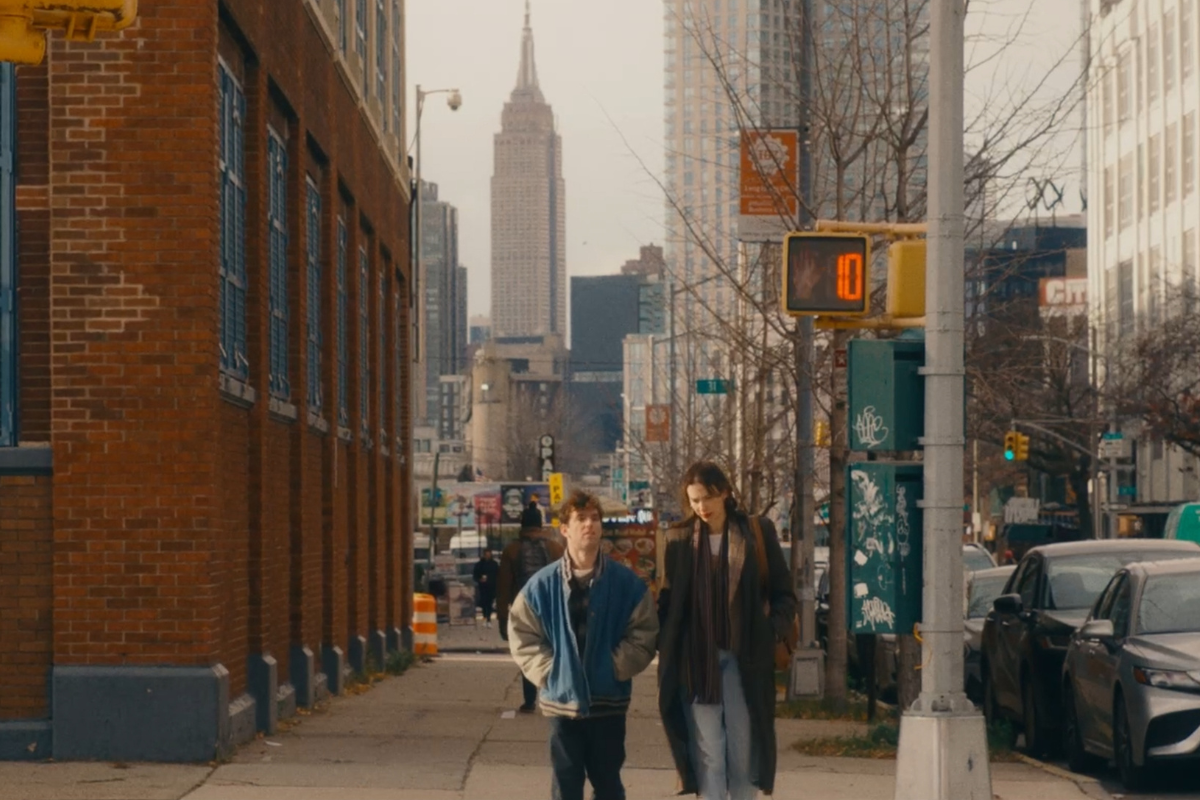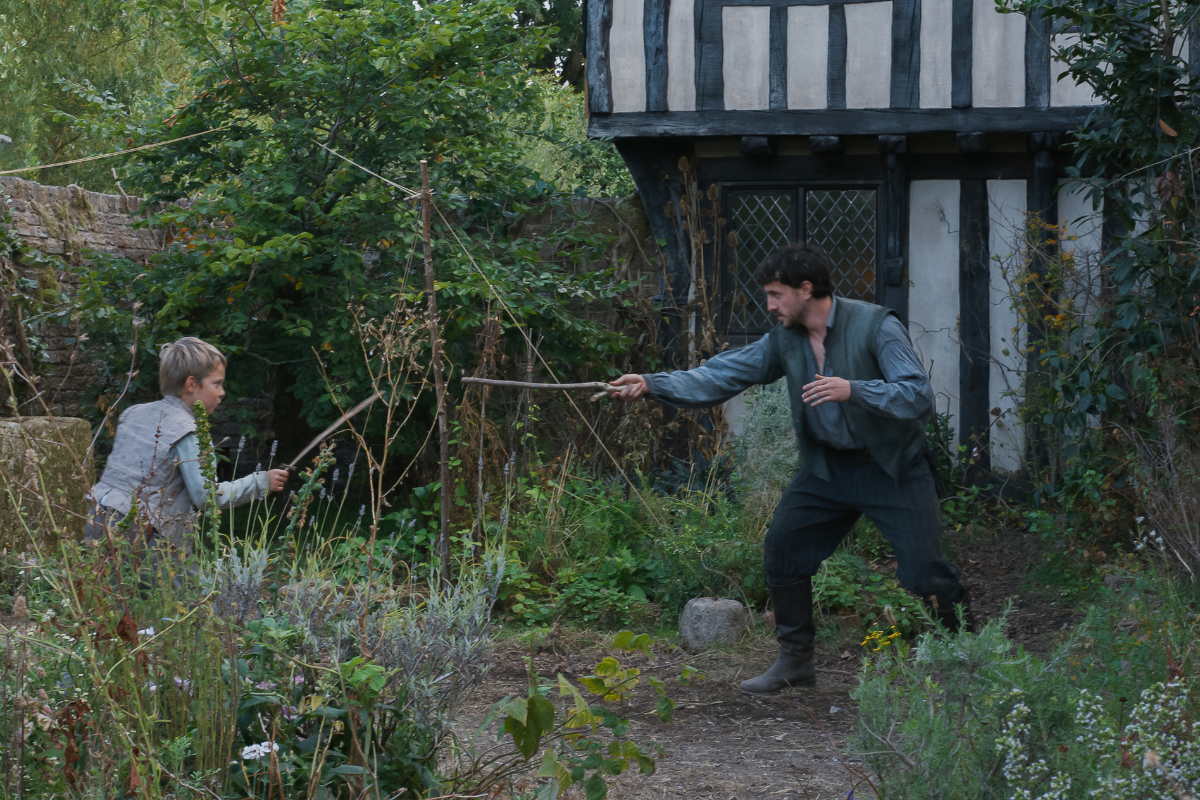Putting Your Stamp on an Adaptation: Edgar Wright and Michael Bacall Discuss ‘The Running Man’
Edgar Wright and Michael Bacall discuss adapting Stephen King’s dystopian minefield from treatment to the final edit.
Writer/director Edgar Wright’s (Baby Driver, Scott Pilgrim vs. the World) The Running Man is an adaptation he’s always dreamed of doing. He and collaborator Michael Bacall (Scott Pilgrim vs. the World, 21 Jump Street) first read the Richard Bachman (Stephen King’s pseudonym) book when they were teenagers and now have a different perspective on it as adults. “What's both shocking and sobering about it is how dead-on Stephen King was in terms of predicting where we'd be right now,” Wright recently told Script Magazine. “The novel takes place in 2025. I was shocked at its prescience,” said Bacall.
Wright and Bacall are no strangers to adapting books. They worked together on bringing Bryan Lee O’Malley’s popular graphic novel Scott Pilgrim vs. the World (2010)to the big screen. That was a little different from transforming King’s novel. According to Wright, “When we worked on Scott Pilgrim, it was a series of books which were being written and changing as we were making the film. Here we're working with a more established, finished book that had been published decades ago.”
With The Running Man, Wright and Bacall have fashioned their own sardonic take on King’s dystopian minefield. Having read the book before he saw the 1987 film which starred Arnold Schwarzenegger and Richard Dawson, “it always stuck in my mind that there was a completely different film to be made out of the same source material.”
Behind the Scenes
Glen Powell (Twisters, Chad Powers) is Ben Richards, the underdog who takes on the system by participating in The Running Man winner-doesn’t-take-all game. He risks life and limb to try to help himself and his family and ends up a zeitgeist folk hero. What’s eerie is how the backstage stratagems of modern networks and corporations are predicted by King.
Michael Bacall: With this book, King had an incredible Nostradamus-like ability to predict the corporatization of government, the wealth gap, and reality television.
Edgar Wright: What's amazing is that the book was published in 1982 under his pseudonym Richard Bachman, but he actually wrote it in 1973. The thing that I marvel at is how his imagination correctly predicted what the backstage machinations of a TV show is like and how characters like Dan Killian are manipulating people's image and creating narratives about members of the public.
Sonya Alexander: What were some things you had to take into consideration when adapting The Running Man?
Edgar: It was a challenge because people have strong ideas about the book. We had to take all of that into consideration and also make it an entertaining sci-fi action film. It was a gift rather than a challenge.
Sonya: When you read material, what speaks to you that says 'this is for me'?
Michael: I think for this one, it was really the raw emotion of Ben Richards' situation and the injustice he faces and sees and his growth into someone who cares about the larger picture as opposed to someone forced to focus on his own life, his family's life, and his day-to-day needs. I think you're looking for what your hero's journey can be as a character and then everything else that surrounds it, like the incredible potential for the action sequences.
Edgar: The things I thought about as a teenager and visualized in the book are a lot of the things that came with the key elements of the adaptation. Two of them are you see everything from Ben Richard's perspective. There are no scenes without him. And also, the fact that the gameplay in the book takes place in the wider world. When you leave the network building, after you've been ejected from the show, you have thirty days where you can go anywhere. That made it a little more expansive as an action/adventure.
Sonya: Michael, you're an actor, and Edgar you're a director. What qualities do you bring from these professions to writing?
Michael: For me, a lifetime of reading scripts, good and bad and almost accidentally learning what works and what doesn't. One part of the process with Edgar that I really love is we always make sure to read through the draft together before anyone else sees it. Just to do a self-check on whether or not the words sound natural coming out of a human mouth. [laughs]
Edgar: As a director I think the thing I've learned is how to write visuals in a screenplay. As Michael and I know, the key to it is not to overwrite. No one likes to read a script where they're confronted with a massively long paragraph of description. It's become the art of writing action or visuals on the page to communicate what you want people to see in as few words as possible.
Sonya: When you're reading material, what appeals to you most - the intellectual aspect or the emotional depth?
Edgar: A bit of both. With Scott Pilgrim it was a bit different because we had Bryan Lee O'Malley's incredibly detailed artwork, which was such a wealth of material to work from. But when you're reading a book, you start to imagine it in visual storytelling as well as what's on the page.
Michael: One of the first things I start thinking about...if you're reading a book where you're privy to a character's thoughts, how can this be adapted into something where you don't get to hear the character thinking? However, we have this one amazing aspect to the book. The confessional, the self-tapes, where the character can speak directly to the audience. That was a fun tool to explore.
Sonya: When you guys start writing, do you focus on characters, acts, location...do you each focus on something different?
Edgar: The first thing we did together on this was look at a treatment of the book itself. We looked at what we wanted to keep and what we wanted to expand on. At the end of that is a very detailed treatment which I think covers all of those things. And also tone as well because there's so much of the film beyond the characters and the dialogue and what's happening is the tone. How you can strike the balance between the dark dystopia and the more satirical elements and the action as well? The treatment is a tone tome, where you're trying to get across how the whole film would be.
Michael: Get a feel for the voices of the characters and their dynamics. All of it.
Sonya: Edgar, would you say you have a signature style?
Edgar: Yes, but it's difficult for me to quantify what that is. Sometimes other people can articulate that better than I can.
Sonya: Michael, were you on the set?
Michael: Yes, I was privileged to be there for the whole shoot.
Edgar: And the whole edit...! [laughs]
Sonya: How long did it take to shoot the film?
Edgar: It was a five month shoot. We started filming just over a year ago. So we started in November, through to the end of March. It was a really intense, ambitious shoot and then straight into the edit. To have it out in theaters as we speak is wild.
Sonya: That’s exciting.
Edgar: It is exciting. I'll say this. The paint is dry, It hasn't been rushed or compromised.
Sonya: What was your most rewarding day on the set?
Edgar: Making movies is a lot of moving parts. It's arduous and sometimes a war of attrition in terms of the different pieces you need to make a scene a scene. There are those scenes where it feels like the scene has taken on a life of its own, beyond your direction...I'd definitely say the scenes on the gameshow set were like that because I think Colman Domingo fired up all of the supporting artists to the point where you felt like it was gloriously out of control! [laughs]
Michael: I fully agree with that. All of those scenes were shot over the course of a week. I remember, just because of the scale of it, being very anxious about it. Colman breezed in and absolutely smashed it and by the end of the first day, had formed an incredible relationship with our background actors in the audience.
The Battle at the Cul de Sac
Sonya: What do you think your version says about modern society?
Edgar: It's about holding a funhouse mirror up to reality. In this case, a book set in 2025, where real-life events are moving really fast - it's a bleeding edge between reality and fiction. But I think that's what makes it exciting. It's a science fiction film where people really recognize the world they're living in.
Michael: I think in a broad sense, with truth as a concept being malleable by the powers that be became a really interesting aspect of it. Making the statement that truth is worth fighting for.
Sonya: Edgar, how did you decide when the action should ramp up?
Edgar: I think the structure of the book is really good and without going into the climax too much, what I like about the climax is it forces you into a situation where there seems to be no easy outcome, which is a fascinating thing for a book to do. Take the hero into a cul de sac. That was challenging to work on and is something that’s not expected.
Sonya: Michael, when writing, how did you know when to make the action tantamount to the rest of the story?
Michael: We started with doing a close reading of the book and trying to decide what we could do straight from the book and how we could keep the structure and locations on target.
Sonya: What did you enjoy most about this collaboration?
Edgar: One of the joys of this...Michael's initial draft was fantastic. One of the things we both enjoyed was in the edit, in the post-production, was being able to embellish it further. Beyond what we shot was a gift of a premise. There was a lot of room for extra detail and color in terms of voiceover and commentary and other things we could add to an already very detailed script.
Michael: The film is very layered. There's a lot of media happening, sometimes in the foreground, sometimes in the background, within the film. Watching those layers develop and enhancing them throughout post-production was really rewarding.
The Running Man is a Paramount Pictures release and stars Glen Powell, Josh Brolin, Colman Domingo, Michael Cera, William H. Macy, Lee Pace, and Jayme Lawson. It hits theaters nationwide November 14.
Sonya Alexander started off her career training to be a talent agent. She eventually realized she was meant to be on the creative end and has been writing ever since. As a freelance writer she’s written screenplays, covered film, television, music and video games and done academic writing. She’s also been a script reader for over twenty years. She's a member of the African American Film Critics Association and currently resides in Los Angeles.


